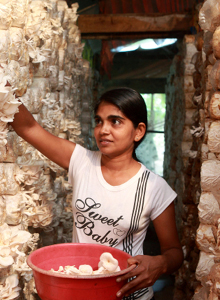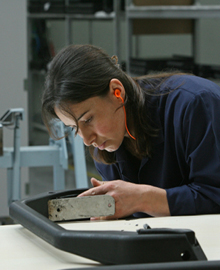Research Brief
How can aid promote the empowerment of women?
- Aid projects that specifically target women tend be better at increasing gender equality than those that mainstream gender.
- The gender gap can be narrowed through public works that focus on providing decent employment for women as well as training and micro-finance for female entrepreneurs.
- The lack of healthcare and social security are found to be main barriers to women’s participation in economic activities.
Over the last thirty years the International Labour Organization (ILO) has actively pursued women’s economic empowerment projects, seeking to aise global awareness of women’s positive contributions to society and improve their welfare. A review of ILO interventions shows that targeting women directly and specifically, engaging and coordinating actively with local institutions to raise awareness, strategies for job creation, and programmes that increase social security, are all crucial to improve gender equality.
Gender equality in the workplace
Women around the world suffer disproportionately from a number of critical economic challenges. Social norms that impede women’s movements outside of the family sphere leave them with fewer property rights and a more limited scope of economic independence.

Furthermore, discrimination towards women causes them to have lower levels of education, skills and knowledge than men, which limits their productive capacity and potential income. Women’s productive activities are also hindered by childbirth and the healthcare issues surrounding it, and by traditional gender roles that tie women to unpaid domestic work.
As a result, of the 1.2 billion working women in the world in 2012, the ILO estimates that 650 million are working in vulnerable conditions and live in poverty. In the struggle for women’s economic empowerment, the ILO highlights four strategies that combine to succeed where others have failed.
Targeting women
First and foremost, all successful ILO projects reviewed targeted poor women directly; specifically at the hiring stage either exclusively or by demanding they be given a quota of the benefits from a pool that also included men. Given the existence of entrenched discrimination against women, a failure to incentivise locals to target women will lead to the failure of any women empowerment objective.
Promoting employment: entrepreneurs, cooperatives and public works
Empowerment through employment and income generation can be achieved in three complementary ways; the promotion of women entreprenuers, the promotion of women’s cooperatives, and the inclusion of women in infrastructure and agricultural works.
One project—funded by the ILO and IrishAid to assist women at the head of micro or small enterprises—complemented access to micro credit with development opportunities such as providing access to training, technology and markets. Similarly, in the Sri Lankan Vavuniya district of the North province, small independent mills are being given technical and management assistance by ILO’s national partner, in exchange for purchasing rice from 36 micro-enterprises.
However, not all women are or can be entrepreneurs. Another way to economically empower women is to promote women’s inclusion in cooperatives. The CoopAfrica programme in East Africa has been successful in empowering poor rural women, boosting agricultural production and income by giving women access to more productive inputs. A post-programme survey showed that 84% of participants experienced increased production and a 186% increase in income, while 64% of women felt more engaged with their communities and family decisions.
Another avenue for employment promotion has been working with governments to include female workers in public transportation, agriculture, and housing works. Examples of such successes include the Commoros’ National Employment Policy, South Africa’s Expanded Public works Programme in the Limpopo province, as well as in India’s National Rural Employment Guarantee Act (NREGA) programme.

Promoting social security
Due to patriarchal society, childbirth, and because women are traditionally seen as the main caretakers of children in the household, women also face higher health risks and time constraints than their male counterparts.
The Micro-Health Insurance for Poor Rural Women Bangladesh, the Aseguradora Rural’s Senora Cuenta in Guatemala, and Jordan’s Micro-Fund for Women, all target women with affordable health insurance. India’s NREGA success also rested on offering childcare when there were more than five working mothers with young children on site. In Sri Lanka’s Poonakary, a grant for a cooperative to build a new processing factory requires that work be given to 100 local women, and that it has a crèche facility for the children of workers.
Engaging with national institutions and coordination
Efforts to promote higher gender equality are not pursued in an institutional vacuum. ILO’s experience shows that positive engagement and coordination of projects and programmes with national actors is fundamental for success.
- Projects aiming to economically empower poor women should target them specifically
- Both the provision of funding through microfinance lenders and public works aimed at job creation must be deployed to assist women entrepreneurs and for those who are not
- A minimum of health insurance and childcare is necessary in order to economically empower women
While a reform in Bangladesh enjoyed long-term sustainability, because it engaged with local agents to facilitate the adoption of gender mainstreaming by local institutions, in India the lack of full institutionalization compromised continuity after the initial intervention. Successful projects ensure that local actors are engaged enough in the intervention to allow it to continue beyond the initial horizons of the donors.
 Join the network
Join the network